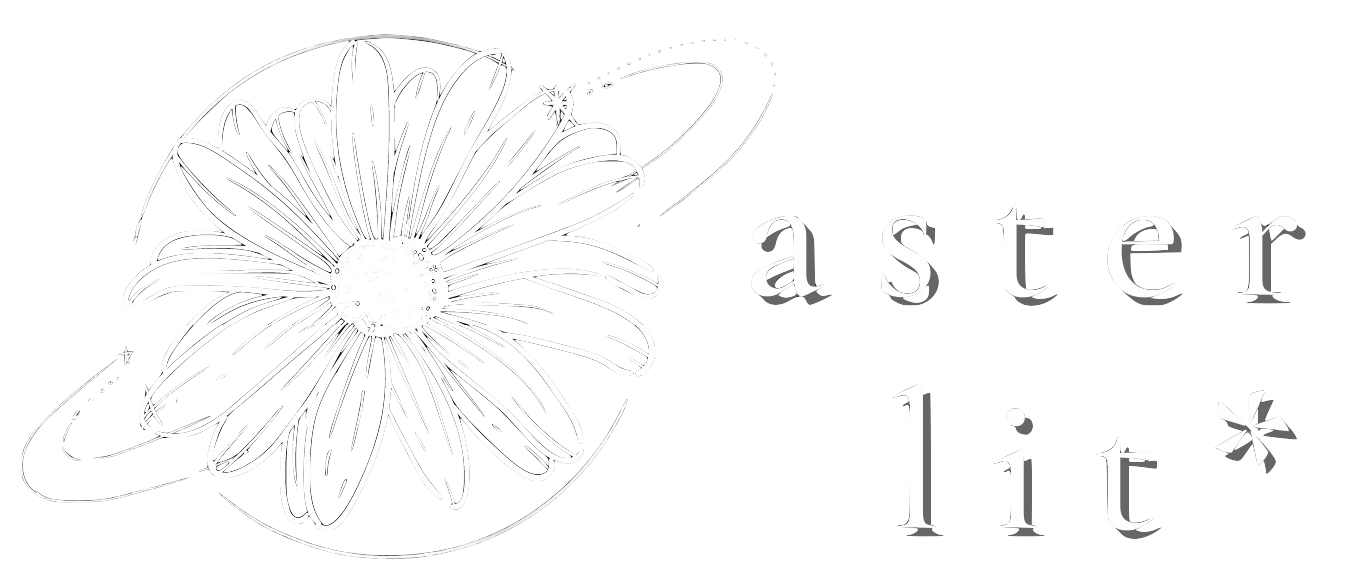
Aster Lit: translatability
Issue 12- Summer 2024
Q&A with Suchita Senthil Kumar
Why did you choose this structure, and how does the fluidity of interpretation in language help you express your message?
I decided to write this poem using the contrapuntal form because I believed it would enable me to mirror the linguistic structure of the Tamizh alphabet. In Tamizh, uyir ezhuthukkal represent the vowels and mei ezhuthukkal could be called the consonants. However, mei ezhuthukkal cannot exist on their own (except when used amidst a word) and are combined to form uyirmei ezhuthukkal.
The poem reads in multiple ways—vertically as the Uyir column, the Mei column and a third horizontal coalescence. I love contrapuntals for their ability to explore individual ideas in separate columns with independent meanings while creating a space to combine them, providing a unified meaning. This fluidity was essential in reflecting the many nuances of the Tamizh script I wanted to explore through my poem.
There is an intriguing exploration between the human search for meaning and role of higher deities throughout your poem. What roles do you think existentialism and faith play in multilinguality and translation; or vice versa, how does language affect religion and philosophy?
As a native Tamizh speaker, I've always prided myself over the fact that it remains one of the oldest languages still in use. When we teach young children a language, the first thing we teach them is the alphabet. I think it's beautiful how the first thing we learn when learning Tamizh is the answer to the question people spend their whole lives trying to answer. Entire philosophies are packed into this simple understanding of uyir (life/soul) being put into the mei (body) giving us uyirmei, soul-body letters for the language to be alive—as an extension for how human life exists.
I speak three other Indian languages along with English. Because of this, translation permeates every part of my life. I'm always translating words from one language to another and trying to make up for the gaps that it leaves. Especially, when attempting to translate words from a language as philosophically rich as Tamizh, there are rarely any words in English that can act as direct translations. Even when expressed in phrases and sentences, the single word often loses its essence. This is challenging and probably what's most beautiful about language itself. The very act of translation becomes that of faith, trying to transcend what one does understand and what one doesn't into another realm, another language
Your inclusion of Vallinam, Idaiyinam, and Mellinam is essential to the body or "crux" of your poem, and seems to have a great deal of cultural, linguistic, and religious significance as well. Could you elaborate on these three concepts—what they mean to you and why do they serve such a foundational role in your work?
While most Indian languages have the consonant concept of ka, kha, ga gha and so on, Tamizh stands apart with a completely different structure. The consonants are arranged as: ka nga cha nya and so on. Apart from the general order in which these consonants are written, they have a classification based on where the sound is born. If the syllable arises from the chest, it is Vallinam. If it is spoken through the nasal cavity, it is Mellinam. If the sound arises primarily at the throat, it is called Idaiyinam (idai = middle).
Again, I think it's beautiful that the Tamizh language addresses the concept of how a syllable must be pronounced and provides names for it. We also have three different types of 'na' sounds, two different 'ra' and 'la' sounds—all depicting different ways of pronouncing the sound when the tongue hits the mouth at different positions. These concepts, when studied in depth, reveal higher truths about the human condition.
I take so much pride in the fact that our ancestors created a language encapsulating great wisdom within simple concepts allowing it to live in the very speech and blood of our people—from a baby saying its first words, to the wise poets we revere.

